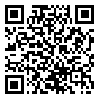Volume 15, Issue 4 (Volume 15, No 4 2025)
jdc 2025, 15(4): 309-331 |
Back to browse issues page
Download citation:
BibTeX | RIS | EndNote | Medlars | ProCite | Reference Manager | RefWorks
Send citation to:



BibTeX | RIS | EndNote | Medlars | ProCite | Reference Manager | RefWorks
Send citation to:
Nowruzi B, Nasiri Z, Atar Z, Ganbarpour F. Polysaccharides and peptides with wound healing activity from bacteria. jdc 2025; 15 (4) :309-331
URL: http://jdc.tums.ac.ir/article-1-5763-en.html
URL: http://jdc.tums.ac.ir/article-1-5763-en.html
1- Department of Biotechnology, Faculty of Converging Sciences and Technologies, Islamic Azad University, Science and Research Branch, Tehran, Iran , bahareh.nowruzi@srbiau.ac.ir
2- Department of Biotechnology, Faculty of Converging Sciences and Technologies, Islamic Azad University, Science and Research Branch, Tehran, Iran
2- Department of Biotechnology, Faculty of Converging Sciences and Technologies, Islamic Azad University, Science and Research Branch, Tehran, Iran
Abstract: (85 Views)
Bacteria are natural sources of metabolites that exhibit diverse bioactive properties, including wound healing, antioxidative, antibacterial, antifungal, anti-inflammatory, antidiabetic, and anticancer activities. Two important groups of bacteria with wound healing potential are polysaccharides and peptides. In addition to cellulose, bacteria produce various polysaccharides (such as exopolysaccharides) with wound healing potential. The most common bacterial peptides used in wound healing studies are bacteriocins and lipopeptides. The aim of this article is to review recent literature on the potential of wound healing in vitro and in vivo by polysaccharides and peptides derived from bacteria (Actinobacteria, Bacteroides, Cyanobacteria, Firmicutes, and Proteobacteria). For this reason, a search was conducted in scientific research databases such as Web of Science, Google Scholar, Wiley, Elsevier, Taylor and Francis, BMC Springer and MDPI with the keywords polysaccharide, peptide, bacteriocins, lipopeptides, streptomyces, bacteria, lactic acid bacteria, cyanobacteria and wound healing. The overall results showed that polysaccharides and peptides and peptides derived from bacteria show wound healing power both in vitro and in vivo. In living models, including animals and humans, these metabolites have a positive effect on wound healing by inhibiting pathogens, antioxidant activity, modulating the inflammatory response, moisturizing the wound environment, promoting the proliferation and migration of fibroblasts and keratinocytes, increasing collagen synthesis, remodeling, epithelialization and angiogenesis. Therefore, peptides and polysaccharides derived from bacteria play a significant role in wound healing.
Type of Study: Review |
Subject:
General
Received: 2025/04/4 | Accepted: 2026/02/4 | Published: 2026/02/4
Received: 2025/04/4 | Accepted: 2026/02/4 | Published: 2026/02/4
Send email to the article author
| Rights and permissions | |
 |
This work is licensed under a Creative Commons Attribution-NonCommercial 4.0 International License. |





